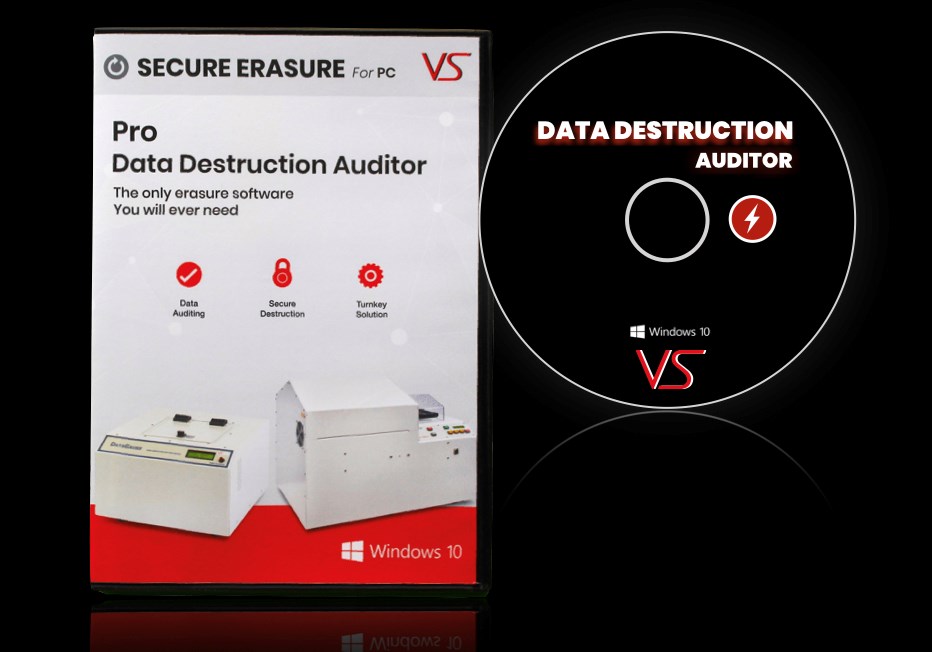Leading Tips for Ensuring Secure Data Destruction in Your Cyber Security Plan
Leading Tips for Ensuring Secure Data Destruction in Your Cyber Security Plan
Blog Article
The Value of Effective Data Destruction Practices in Safeguarding Sensitive Info and Ensuring Computer Protection
In a period where information violations are significantly common, the importance of efficient data destruction techniques can not be overstated. Implementing robust information damage techniques not only alleviates these risks yet also straightens with lawful conformity demands, guaranteeing that organizations promote their online reputation and foster customer trust fund.
Understanding Information Devastation
Comprehending data damage is essential in today's electronic landscape, where delicate information can easily be compromised. Reliable information destruction includes not merely guaranteeing yet erasing data that data is irretrievable through detailed methods. This process is necessary for organizations that manage private customer details, copyright, or inner papers, as any violation can lead to serious economic and reputational consequences.
Information destruction includes numerous strategies, including shredding physical media, degaussing magnetic storage gadgets, and utilizing software-based services that overwrite information several times. Each approach offers a specific purpose and must straighten with the level of sensitivity of the details being dealt with. Physical damage is typically liked for tough drives including highly personal data, while software application techniques may suffice for much less delicate information.
Moreover, adhering to market standards and policies, such as the General Data Defense Regulation (GDPR) or the Wellness Insurance Policy Transportability and Liability Act (HIPAA), is important for conformity and to alleviate lawful risks. Organizations should develop a robust data destruction plan, train employees on finest practices, and regularly audit their procedures to make sure that all sensitive info is thrown away securely and properly.
Risks of Inadequate Practices
Poor information devastation practices expose companies to substantial dangers that can have significant effects. When sensitive information is not effectively thrown away, it remains prone to unapproved access, which can result in information breaches and identification theft. Such occurrences not only compromise the safety of individuals yet additionally taint the company's reputation, leading to a loss of customer depend on and possible economic consequences.
Furthermore, governing conformity is progressively rigid in numerous sectors. Failure to follow data destruction regulations can result in significant penalties and lawful actions against organizations. These penalties can stress funds and draw away focus from core business procedures.
On top of that, the misuse of recurring data can bring about intellectual residential property burglary or business reconnaissance, threatening competitive benefits (data destruction). The impact of poor data damage expands beyond prompt financial losses; it can additionally lead to lasting damages to brand honesty and market setting

Organizations should acknowledge that data security is not exclusively concerning protecting against breaches; it likewise encompasses the accountable monitoring of data throughout its lifecycle. Disregarding effective information destruction procedures can have tragic implications, emphasizing the requirement for durable actions to mitigate these threats.
Ideal Practices for Data Destruction
Applying efficient data damage methods is vital for guarding sensitive info and preserving compliance with governing standards. Organizations should take on a multi-faceted approach to make certain that information is irretrievable, thus protecting against unauthorized access and possible violations.
First, data should be categorized based upon level of sensitivity, enabling organizations to use proper devastation approaches tailored to the degree of threat. For electronic data, utilizing software-based data-wiping devices that their explanation follow market standards can efficiently overwrite existing data. Physical destruction techniques, such as shredding or degaussing, are essential for devices that save delicate details, guaranteeing full obliteration.
Establishing a clear information retention policy is vital, detailing how much time different sorts of info should be preserved before devastation. Normal audits of data storage space systems are likewise essential to determine out-of-date or unneeded data needing elimination.
Moreover, training employees on the importance of information damage and the certain procedures to follow fosters a society of safety and security within the company. Keeping paperwork of data destruction refines offers accountability and sustains conformity with outside policies and inner policies. check By adhering to these best techniques, companies can considerably minimize the threats connected with data exposure.
Legal and Conformity Considerations

Failure to follow these policies can lead to serious penalties, including considerable penalties and reputational damages. Organizations has to carry out a robust information devastation policy that lines up with these legal structures and supplies clear standards on the correct methods of data disposal, whether physical shredding or electronic wiping.
In addition, maintaining documents of information damage tasks is necessary for showing compliance throughout audits or inspections. By prioritizing legal and conformity factors to consider, companies can improve their information protection posture and foster trust with stakeholders and clients, ultimately contributing to a much more safe information administration atmosphere.
Advantages of Effective Data Devastation
Effective information damage methods expand past mere conformity; they offer significant benefits to companies that prioritize them. By ensuring that sensitive information is irretrievably damaged, organizations minimize the risk of information violations and the prospective financial consequences associated with them. This positive strategy not just safeguards versus unauthorized accessibility but also improves the general dependability of the organization in the eyes of stakeholders and customers.
Applying durable information damage techniques, such as physical destruction of storage devices or innovative information cleaning strategies, adds to the strengthening of a company's cybersecurity pose. data destruction. It decreases the probability of copyright burglary and protects proprietary info, consequently maintaining an affordable edge in the market

Verdict
In final thought, effective information damage methods are vital for safeguarding delicate information and enhancing total computer protection. Eventually, a commitment to robust check that data devastation techniques promotes a society of responsibility, thus reinforcing a company's cybersecurity stance and preserving customer trust.

Report this page